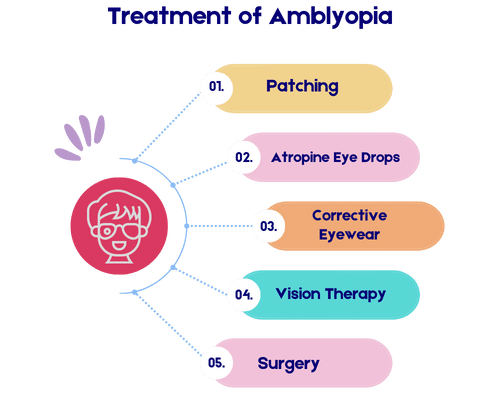The eye abnormality of Amblyopia, more commonly known as “lazy eye,” is an eye disorder in which one eye does not reach normal vision, even with glasses or contacts. This problem is most prevalent among children, and if it isn’t treated, it can make the affected child visually impaired or even blind from the affected eye. On the other hand, if Amblyopia is caught early and treated correctly, its effects could significantly be reduced in terms of Vision loss, leading to better vision. This blog essay is based on input from Dr. Amit Gupta, a consultancy physician at the eye department of Max Hospital Bathinda. We talked about the latest diagnoses and treatment options for Amblyopia or lazy eye. The idea is to spread awareness for early, timely diagnosis and treatment of Amblyopia.
What are the Causes of Amblyopia or Lazy eye?
Amblyopia occurs when the brain and the affected eye do not work together correctly, leading the brain to favour the other eye over time. This condition can result from several issues, including strabismus (misaligned eyes), a significant difference in prescription between the two eyes, or any condition that prevents clear vision in one eye. Recognizing the signs of Amblyopia early on is crucial for effective treatment.
What are the Signs of Amblyopia or Lazy Eye condition?
- Squinting or shutting an eye
- Poor depth perception
- Eyes that do not appear to work together
- Abnormal vision screening results
Diagnosis of Amblyopia
For Amblyopia to be diagnosed, one requires a thorough Eye examination from an eye specialist. This process can start with pediatricians, school screenings, or eye care workers, especially if they see signs of vision loss. Some important parts of the analysis are:

- Vision testing: checking the clearness of vision in each eye to find vision differences.
- Refraction is the process of determining the correct eyeglasses prescription.
- Eye alignment evaluation. As part of the eye alignment and health exam, problems like strabismus and cataracts that could lead to Amblyopia are looked for.
Finding out about Amblyopia early is significant for treating it successfully. Ideally, this should happen before age seven because the visual system responds better to treatment when the person is young.
Treatment of Amblyopia
Treatment for Amblyopia aims to improve visual acuity in the affected eye and enable the brain to use both eyes together effectively. Treatment effectiveness diminishes with age, but recent studies suggest benefits can still be realized beyond early childhood.
- Patching
Most of the time, patching the better eye makes the brain use the weaker eye, which is how Amblyopia is treated quite often. At first, this might only be for a few hours a day, but as we progress, an eye doctor’s advice to add more time as the patching practice gradually is quite helpful.
- Atropine Eye Drops
Like patching, atropine drops can be used to blur the vision in the better eye to get the weaker eye to be used more. This method is sometimes chosen because it is easier to use, especially on kids who don’t want to patch.
- Corrective Eyewear
Vision disorders like near-sightedness, farsightedness, or astigmatism can be fixed with glasses or contact lenses if they are a cause of Amblyopia.
- Vision Therapy
Vision therapy involves personalized exercises under the supervision of an eye care professional to improve coordination and focus. These exercises can help the eyes work together more effectively.
- Surgery
In cases where strabismus is present, surgical intervention may be necessary to align the eyes properly before or in conjunction with other amblyopia treatments.
Innovations in Treatments & corrective Technologies for Amblyopia
More effective correction methods for Amblyopia are possible thanks to progress in medical research and technology. Virtual reality (VR) and computer-simulated exercises are two examples of digital therapies that are showing promise as ways to get people interested in eye therapy. These ways are meant to be more fun and interactive, which might make people more likely to follow treatment plans.
Blog Summary
The journey to correct Amblyopia is a joint initiative amongst patients, families, and eye care professionals. “Regular follow-ups with qualified child specialists and adherence to advised treatment plans are essential for success. While the challenge of Amblyopia can be daunting, the potential for improved vision and quality of life is significant,” says Dr Amit Gupta of the Max Hospital Bathinda in Punjab. “Early detection and intervention remain the cornerstones of effectively managing Amblyopia (Lazy eye). With a combination of traditional treatments and emerging technologies, there is renewed hope for individuals affected by this condition“, adds Dr. Kashish Gupta, the best eye doctor in Bathinda, Punjab. By fostering awareness and advocating for regular eye examinations, we can ensure that those with Amblyopia have the best possible chance of achieving optimal vision. That is the underlying purpose of our blog series at the eye centre of Max Hospital Bathinda Punjab.

